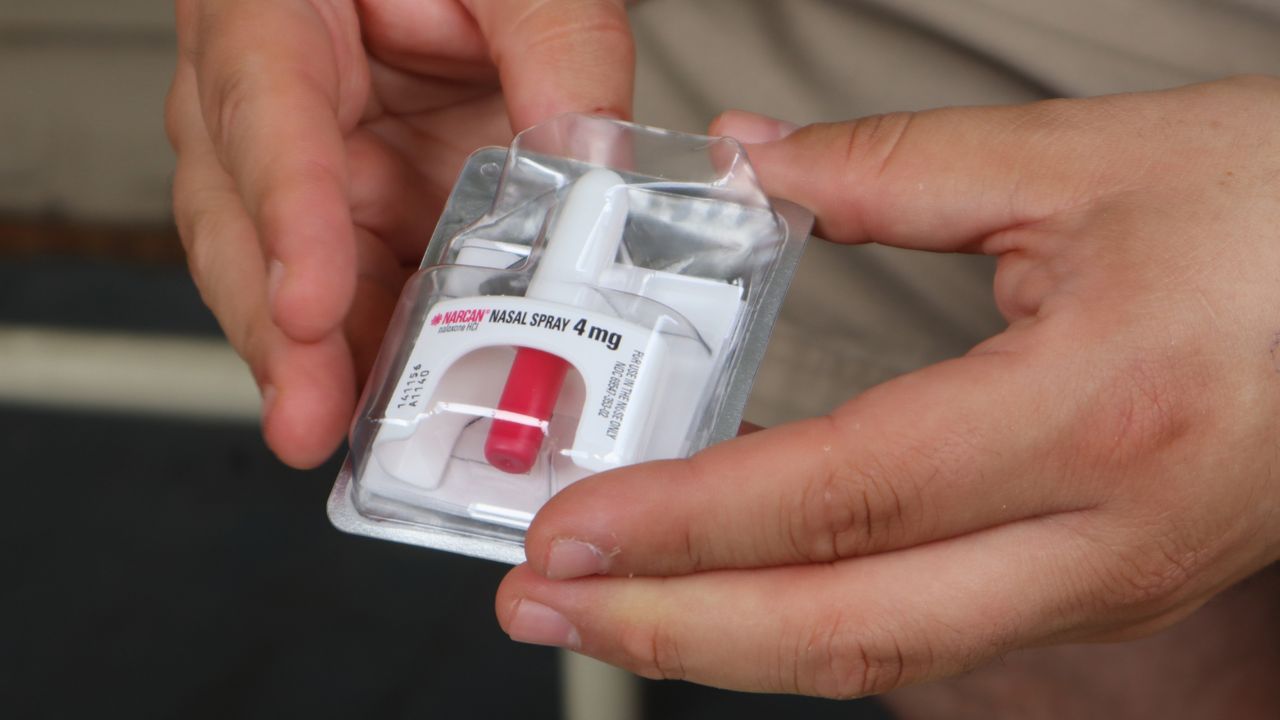CLEVELAND — University Hospitals is increasing its efforts to dispense naloxone, a drug which can help reverse an opioid overdose, as Ohio continues to battle the opioid epidemic.
The Centers for Disease Control and Prevention’s State Unintentional Drug Overdose Reporting System database ranks Ohio as sixth in the nation for opioid-related overdose deaths. As the state marks its third Ohio Overdose Awareness Day, the medical examiner’s office projects Cuyahoga County will see a record number of drug overdose deaths.
“Our goal is to make it easier for anyone who wants or needs a kit to get one,” said Sam Stitzel, a pharmacist who leads Project DAWN at UH. “Beyond administering to our own patient population, we want to further affect the overall community and it’s getting easier to do that which is great.”
University Hospitals first began supplying naloxone kits in 2020 as part of Project DAWN. That year, 35 kits were distributed, but in 2022 the number rose to 2,057 kits. UH is on track to distribute nearly 3,000 in 2023.
Naloxone reverses an opioid overdose and can quickly, but only temporarily, restore a person’s normal breathing, which gives time for further interventions.
The kits are available at 14 University Hospital locations, including emergency departments, outpatient clinics, pharmacies and inpatient units. Plans are underway for the kits to become available at primary care provider offices, other outpatient facilities and for them to be distributed at health fairs and community events.
The Ohio Board of Pharmacy is working to expand how naloxone is dispensed. At emergency departments, outpatient clinics and health fairs, there are few requirements for distribution. Naloxone can be given to patients without collecting the patient’s name, date of birth or address — so long as the patient is counseled on how to recognize an overdose, what to do during an overdose and how to store/administer naloxone.
Beyond Project DAWN, University Hospitals participates in opioid mitigation efforts including: Comprehensive Pain Center at UH Parma Medical Center, THRIVE ED and Project ECHO.
According to the CDC, nearly 110,000 people died in 2022 because of an overdose, the highest number of American deaths recorded in a calendar year.
“The statistics are bleak, but I’m hopeful that more community members and patients are ready to be part of the solution,” said Stitzel. “They’re on board with the fact that they might be able to do something to save a life, and we’re here to equip them to do that.”



